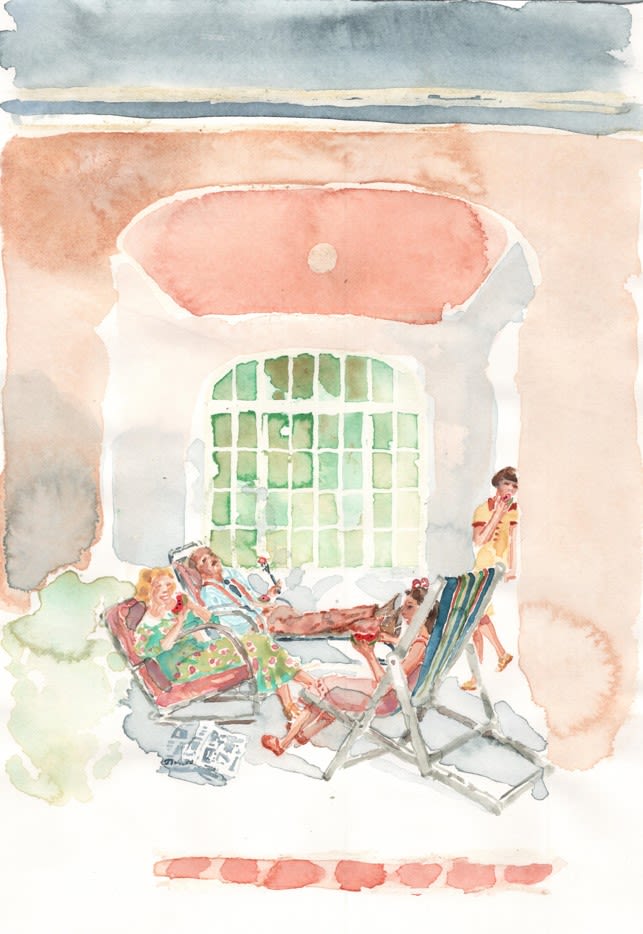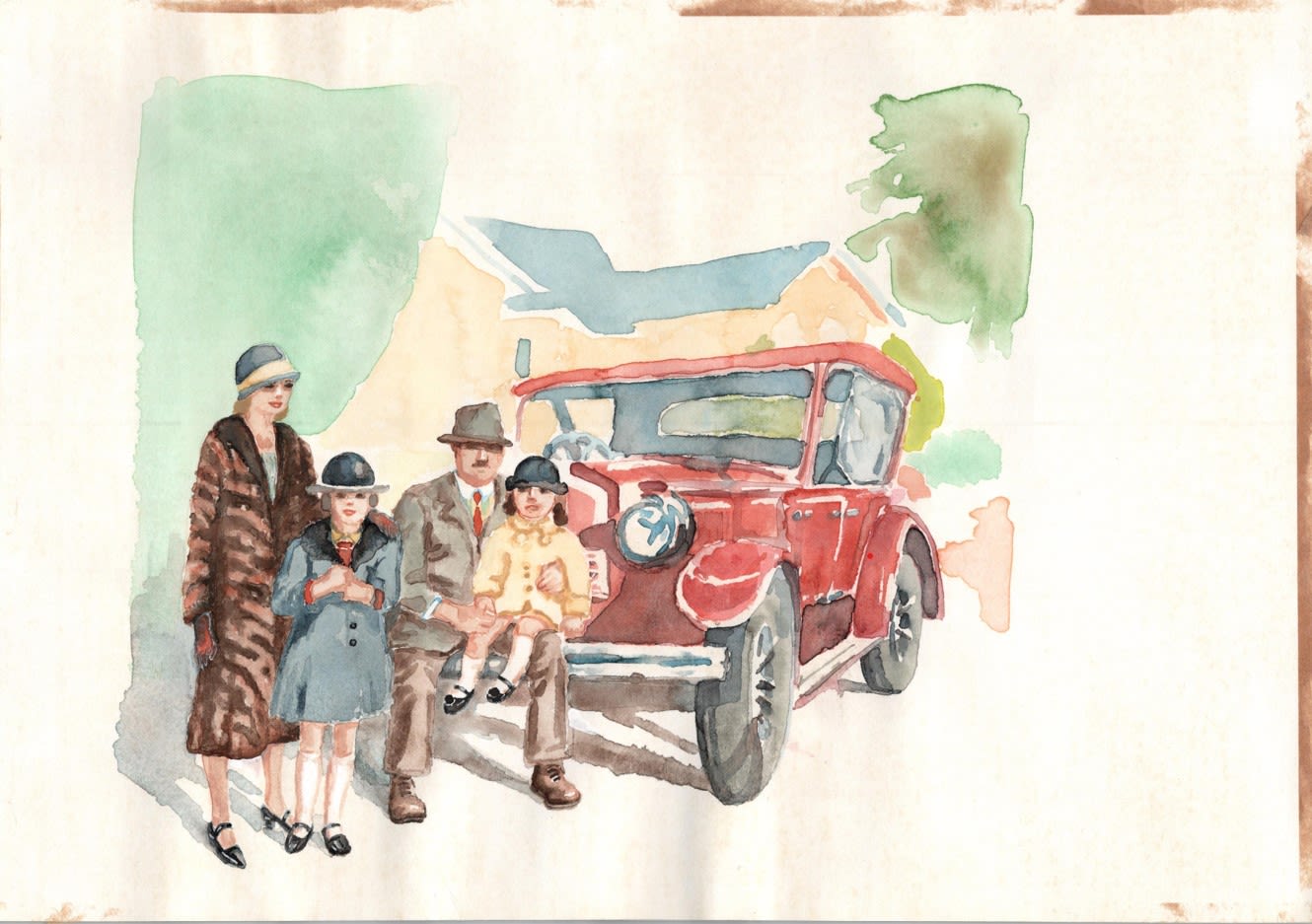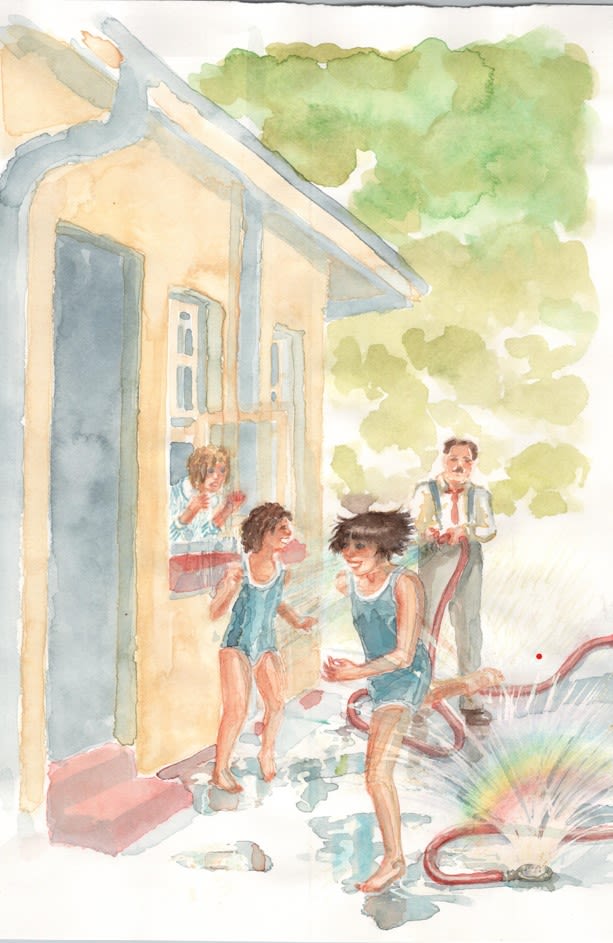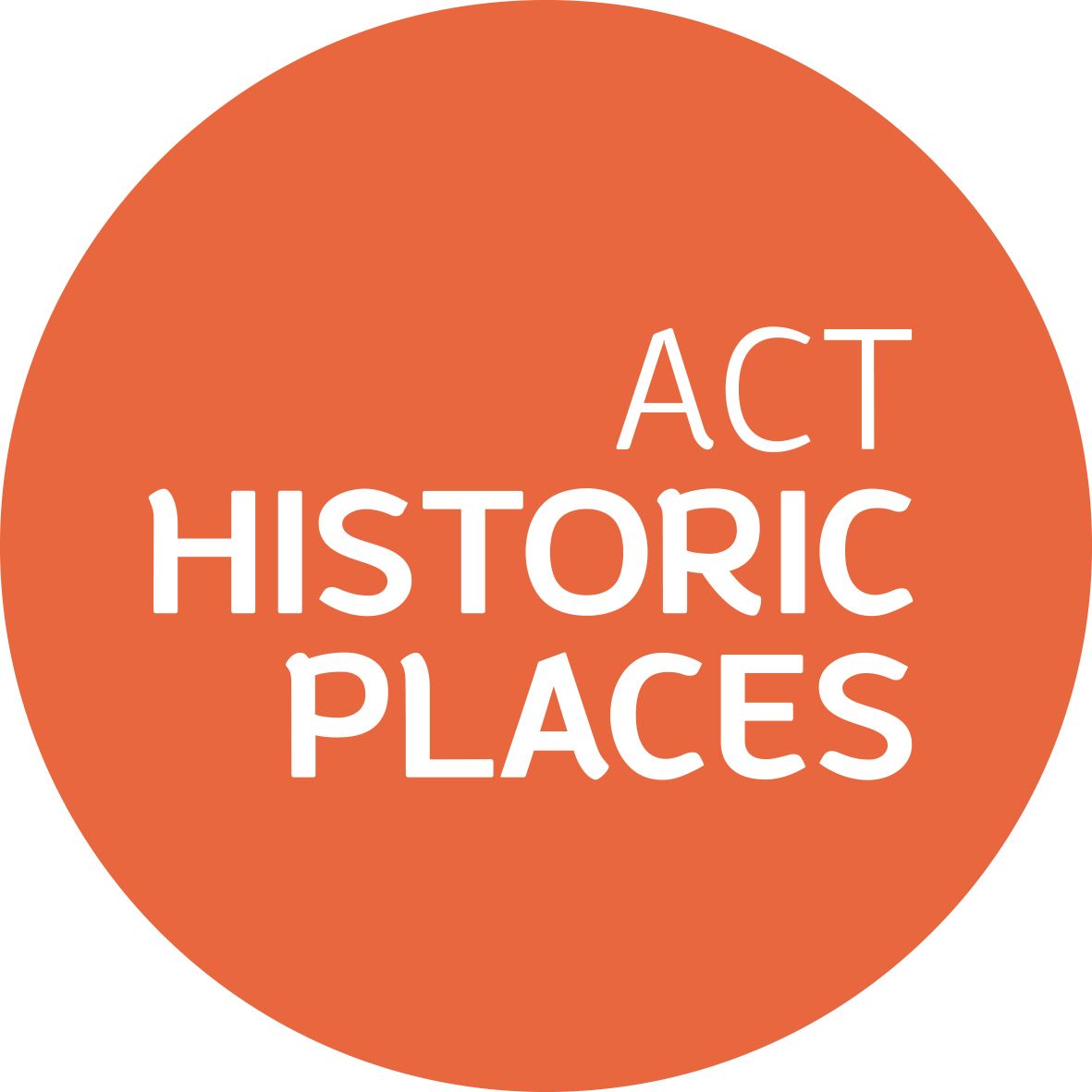Happy 100th birthday Dawn
Dawn Waterhouse celebrates her centenary year
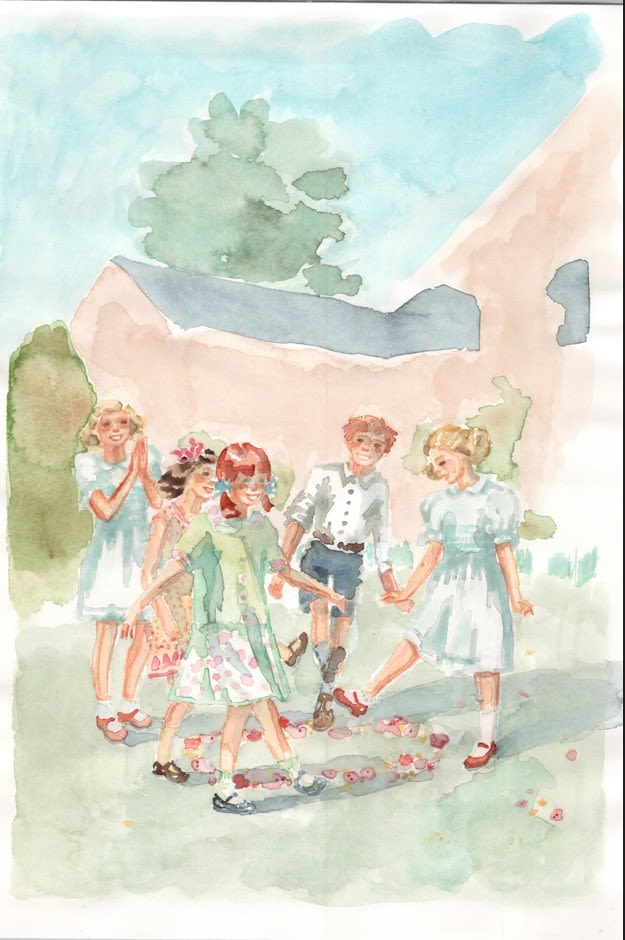
Canberra, in the words of Dawn Waterhouse, has been like a sister as the federal capital has grown up alongside her. As she marks her 100th birthday, ACT Historic Places looks back and celebrates Dawn’s well lived life.
Dawn Waterhouse was born Allison Dawn Calthorpe on December 15 1923.
Her middle name was chosen by her parents because of the beautiful sunrise her father witnessed after her birth. It was a name she has used throughout the decades - ten of them in fact. She is now celebrating her milestone birthday.
Dawn’s mother Della grew up in Sydney to a Norwegian father and an American born mother. Della met her future husband Harry Calthorpe while she was visiting her sister in Maitland, NSW.
Harry had recently returned injured from Gallipoli and was working as a recruitment officer. The couple married and before long had moved to Queanbeyan where Harry became a partner in stock and station agent Woodgers and Calthorpe.
Dawn’s memories of growing up at 24 Mugga Way, Red Hill, are fond ones. She was three years old when the family moved to what is now Calthorpes House from Lowe Street in Queanbeyan and her older sister Del was eight.
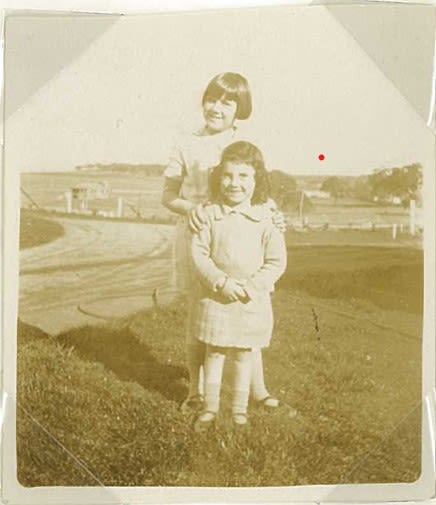
Dawn and her older sister Del not long after moving from Queanbeyan
Dawn and her older sister Del not long after moving from Queanbeyan
Her first memories of the house were of her father carrying her over the joists while it was being built. On the day the family moved in she recalls running up the hall to test the very flash indoor toilet with its button-pressed flush.
There were other firsts - such as hearing the very first broadcast of the ABC, or hearing Kingsford Smith speak on the crackling wireless.
"I can't remember very much more about [the wireless] than static.
"Although one night my father came and said, 'everybody, everybody come and listen to Kingsford Smith talking to his mother in New Zealand'.
"There must have been a little bit of airwave. So we all thought that was very exciting."
Because of the Depression, Dawn didn’t go to school until she was eight years old. Her parents had been hoping to send her to her sister’s school St Gabriel’s which would later become Canberra Girls Grammar.
Unable to stretch the family budget at the time, she went instead to Telopea Park Primary School, moving to Girls Grammar when she was 10.
Dawn loved reading - something that has stayed with her throughout her life - but found the early years of school a struggle.
"Because I had missed so much of school, I didn't know what they were really all about. Well, I did flummox at school in those early days.
"I made some friends there and I was fairly happy once I moved into another class.. that was just before Easter 1935 and my mother said I was going to the Girls Grammar and that was a surprise too.
"So down to Sydney at Easter we went and we got the new uniform. It was the first time we'd had a green uniform and off I went to Girls Grammar."
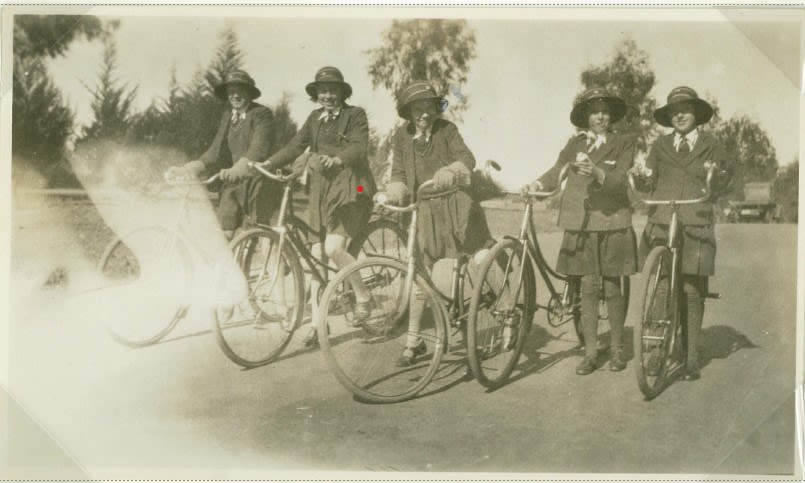
Riding with friends to Canberra Girls Grammar School
Riding with friends to Canberra Girls Grammar School
Dawn loved her time there and remembers it being one big family. She was 14 when WWII broke out and the last years of her schooling were punctuated by air raid drills in trenches that were cut like zigzags into the school grounds.
There were practices "all the time and the aircraft, little hurricanes and little planes, would go across and they would be allocated certain places to drop flour bombs".
If you were caught with flour on your clothes or hair, "you knew you’d been slack".
Dawn left school just shy of her 17th birthday but like many girls of her generation the career options open to her were limited.
She recalls her father, whom she adored and who adored her, saying when she or her sister found study hard that "you can’t boil an egg with algebra". In keeping with the times, girls were destined for a certain path.
"We were going to be wives and mothers, cook and have babies, and that was that...and that is what we did really."
From the age of seven, however, Dawn had wanted to become a nurse. The plan was that she would train in Sydney where her father’s cousin was a matron at a hospital, but she was too young to enrol in nursing at the time. Keen to utilise her love of physiology and zoology she saw a job going at CSIR, the precursor to the CSIRO, as a lab assistant.
While her mother was initially reluctant for her daughter to go into the public service, a friend whose husband worked in entomology recommended the move.
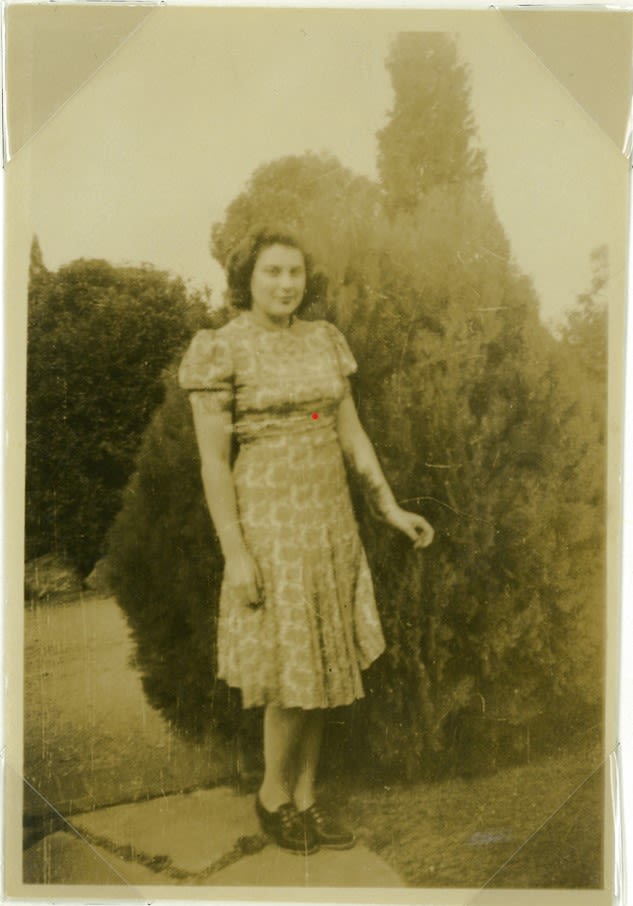
Dawn, aged 15
Dawn, aged 15
It was a time Dawn recalls with enormous fondness and it was an important role at that.
The war was in full swing. Although she was ready to enrol in nursing when she turned 18, with the shortage of men on the home front she was manpowered to remain at the CSIR.
"My very first job was feeding grasshoppers. [Most of my family] thought that was very peculiar but Dad didn't because he could see the progress towards locust control.
"There are dry areas where the grasshoppers lay their eggs and they had to be found, checked and the numbers counted….A lot of research was done under these pads where the locusts were breeding. So off I went, as a young girl too, by myself and I learned to drive a gas producer.
"That was another advantage for me. I could go out to the country and take the trucks and go to these places with the gas producer. That's what I did for a year.”
Wool supplies for the uniforms of the Allied armies were a key concern and Dawn was sent to Brisbane to help monitor wool moths in the wool stores.
"The wool moth got into the wool and it had to be sprayed or kept out as best we could and counted. Everything had to be counted."
By this time Dawn had met and fallen in love with her future husband Doug Waterhouse, a young scientist who would go on to lead the entomology department at the CSIRO and whose research helped in the development of aerogard among other insect controlling methods. Doug was made an army captain during the war, his research in New Guinea assisting with the war effort.
"I met him the very first day I was there because it was war time and there were no cars and the bus stopped at London Circuit.
"You had to walk up the University Avenue, a long way, and he had a gas producer in his car. He'd built it himself and he pulled up and picked up a group of girls and I was one of them.
"Then he had me seconded from the department I was in to his to help him with a big program on blow flies. And we had to walk from blow fly trap to blow fly trap, about three miles. And he came with me. I wonder why?! … He made a business of it all the time."
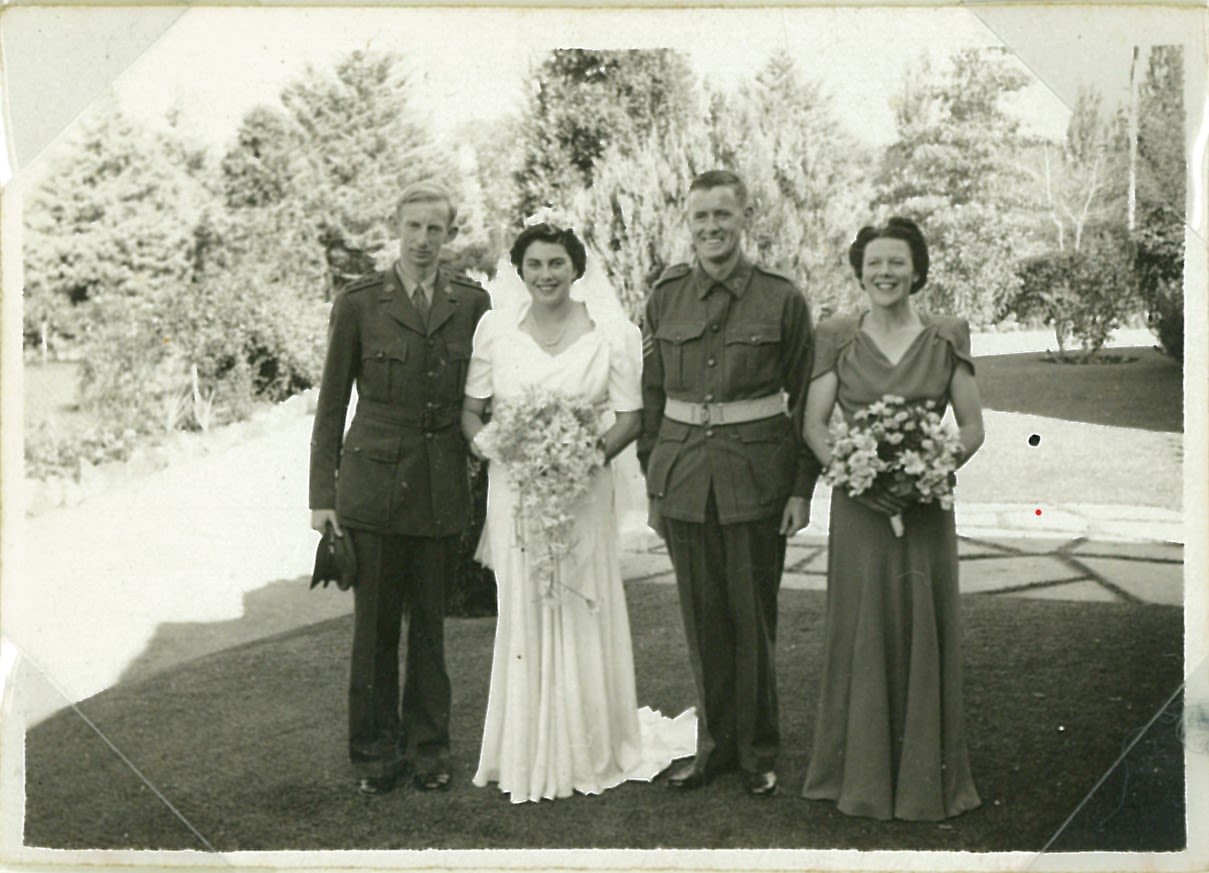
Doug and Dawn on their wedding day in 1944 with her sister Del as part of the bridal party
Doug and Dawn on their wedding day in 1944 with her sister Del as part of the bridal party
Dawn and Doug married on March 4, 1944 with a reception held at the family home on Mugga Way. Now a married woman, Dawn was barred from working in the public service and left the CSIR. Although she fully accepted that was the way it was at the time, when she looks back now she says the government had "funny ideas".
"I would have loved to have stayed working. I loved it. I found it very, very interesting. I was working with Doug and the mosquitoes when I left. It was interesting. You were doing something for the war, you were really getting into it."
The couple were living in a flat in Reid but those initial months, Dawn recalls, were very lonely as many of her friends were unmarried and still working or at school.
Doug was working during the day. What saved her and gave her new focus, she says, was the birth of their daughter Jill in July 1945.
Within a few months there was another reason to celebrate - the war was over. It is a moment that is etched vividly in Dawn’s mind. Doug and Dawn had gone to the pictures for a rare night out without the baby. As they were driving home to her parents at Mugga Way, suddenly all the lights went on and the blackout curtains went up.
They realised the war was over.
"So we raced in and everybody was speechless with joy…And Dad had saved some of my wedding champagne and so he went and he opened this bottle of champagne and we all had to write our name on the cork and the date."
The next day Harry Calthorpe drove the family to the top of Mount Ainslie to see all the lights of Canberra; "that was just magic, oh that made you cry. It was really just so unexpected and so beautiful after such a dismal, long time. We had forgotten what it looked like."

Doug in his army uniform and Dawn before they were married
Doug in his army uniform and Dawn before they were married
After the war Dawn settled into her life as a young mother. She remembers frequent shopping trips in and around the city, and fulfilling her thirst for knowledge with borrowing books from the library. Doug left for the UK to study at Cambridge for 18 months but due to the bleakness of post war Britain and the long journey by ship, Dawn and Jill stayed behind.
Another baby, a son Douglas, followed in 1951 and another, Jonathon, was born in 1955. That year the family moved to the United States so Doug could work at Yale for the CSIRO to further his research into insect repellents.
Dawn recalls they had a beautiful home next to the campus and travelled as much as they could in the United States. It was an exciting time. En route she recalls the ship arriving in Hawaii with a glorious welcome, and she saw TV for the first time.
The family stayed in the United States for one year and on the way home detoured via the UK and Paris. On the journey home they were caught up in the Suez Crisis where they were stuck for a while but Dawn took it all in her stride.
The 50s and 60s was a period of rapid expansion for Canberra with new national institutions being built and an influx of public servants. In 1964 Dawn had her fourth child, a son Gowrie, and the family was complete.
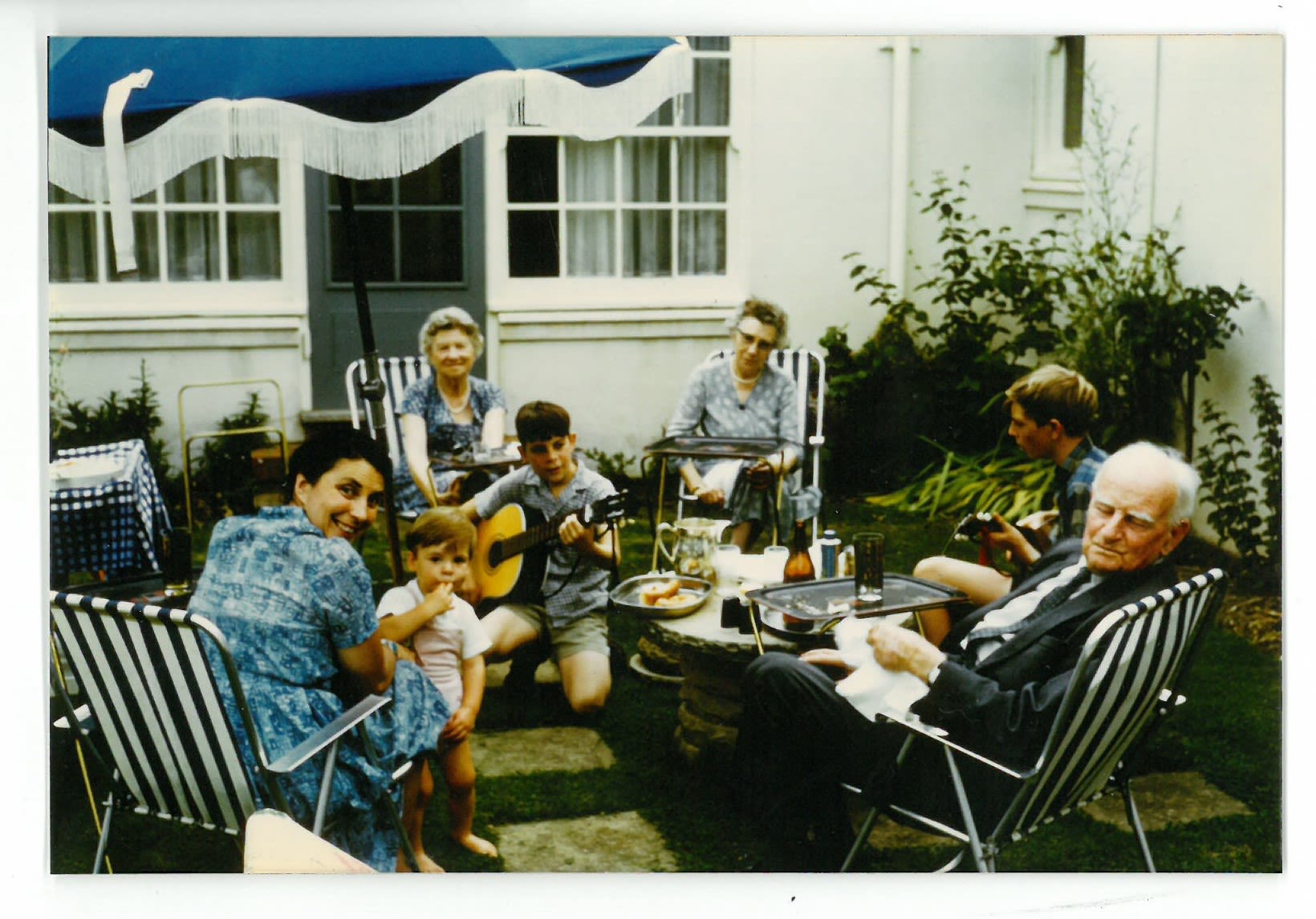
Dawn with her three sons Gowrie, Jonathan, and Douglas, with her mother Della Calthorpe and Doug's parents Janet and E G Waterhouse, circa 1965
Dawn with her three sons Gowrie, Jonathan, and Douglas, with her mother Della Calthorpe and Doug's parents Janet and E G Waterhouse, circa 1965
That same year she witnessed the lake being filled, a pivotal stage in the original plan for Canberra. For Dawn Canberra was like a sister and "we were growing up together".
"The lucerne flats and the cattle were all very picturesque going across there [the river], but the magic of the lake was like Cinderella’s pumpkin carriage turning to gold.
"It sounded like it was mythical. Could it ever happen?"
By this time the family was well ensconced in their family house in Deakin. As Dawn and Doug only had one child when they first purchased their lease in the late 1940s, the Department of the Interior deemed they were only allowed to build a small two bedroom house.
They were granted enough bricks to build the foundations but like many things in the immediate post war years there was a delay in supplies. Always resourceful, the Waterhouses decided to make their own. Dawn recalls they made all the grids for them and her job was to water them a couple of times a day to prevent drying out.
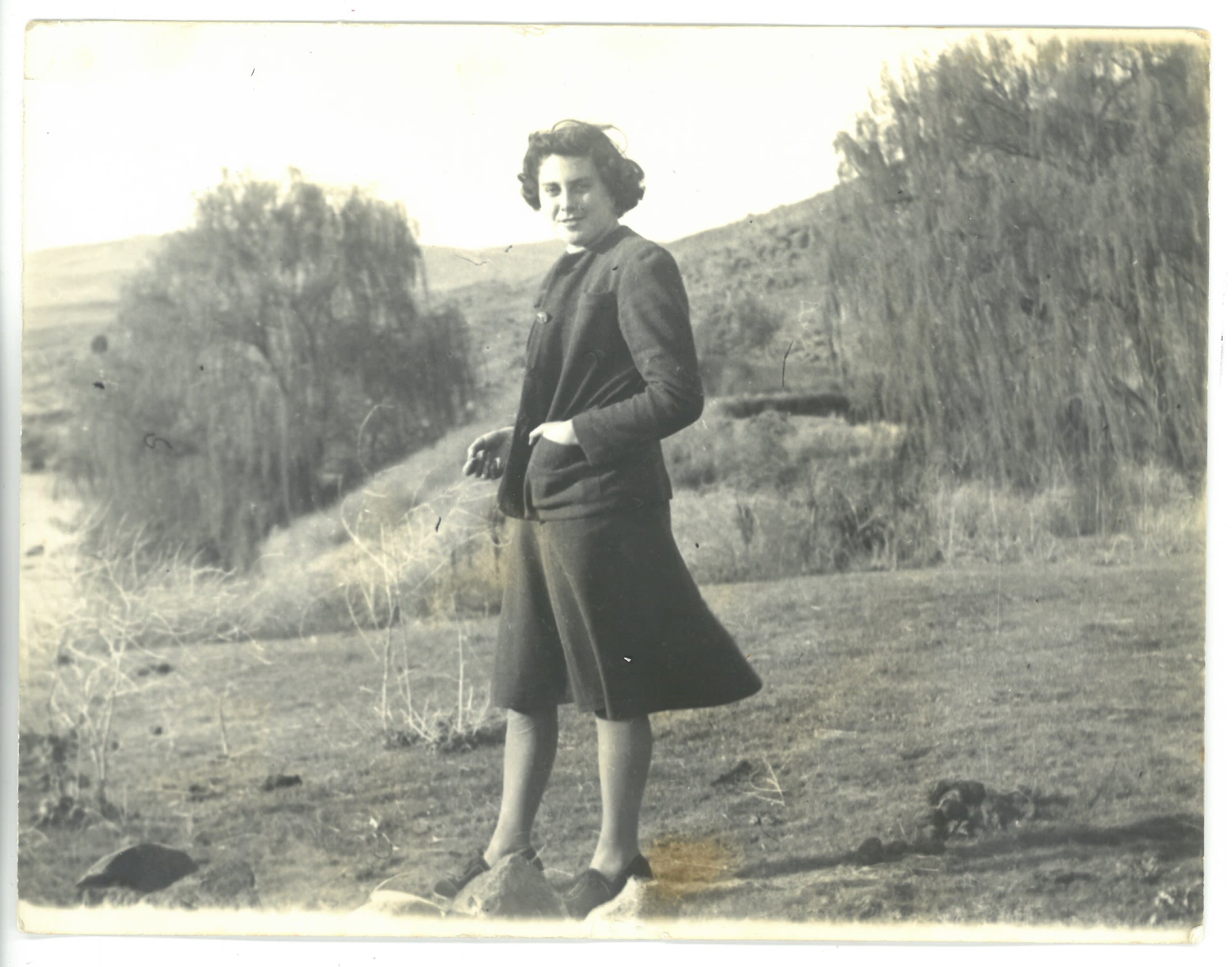
Dawn at the Deakin house site, circa late 1940s
Dawn at the Deakin house site, circa late 1940s
There was other red tape to overcome. Doug had recently returned from a trip to America with a brand new Bendix washing machine. They told the department they had no need for a laundry with a copper and tubs, but the department insisted. Dawn recalls Doug fought the move so much it made it into an editorial in The Canberra Times.
Despite the “hoo ha” over subsequent extensions, Dawn says the home was “a dream come true” and they spent many happy years there.
Caring for a growing family was punctuated by holidays down at beloved Mossy Point on the south coast of NSW and supporting Doug’s work by becoming heavily involved in the Academy of Science wives’ program.
Dawn has been a champion of community service, involving herself in many causes including school and church fetes, Legacy, the Heart Foundation and the Red Cross Blood Bank where she became an honorary director for three years. She remains active in the Wattle Day Association and her love of Canberra and its history remains strong.
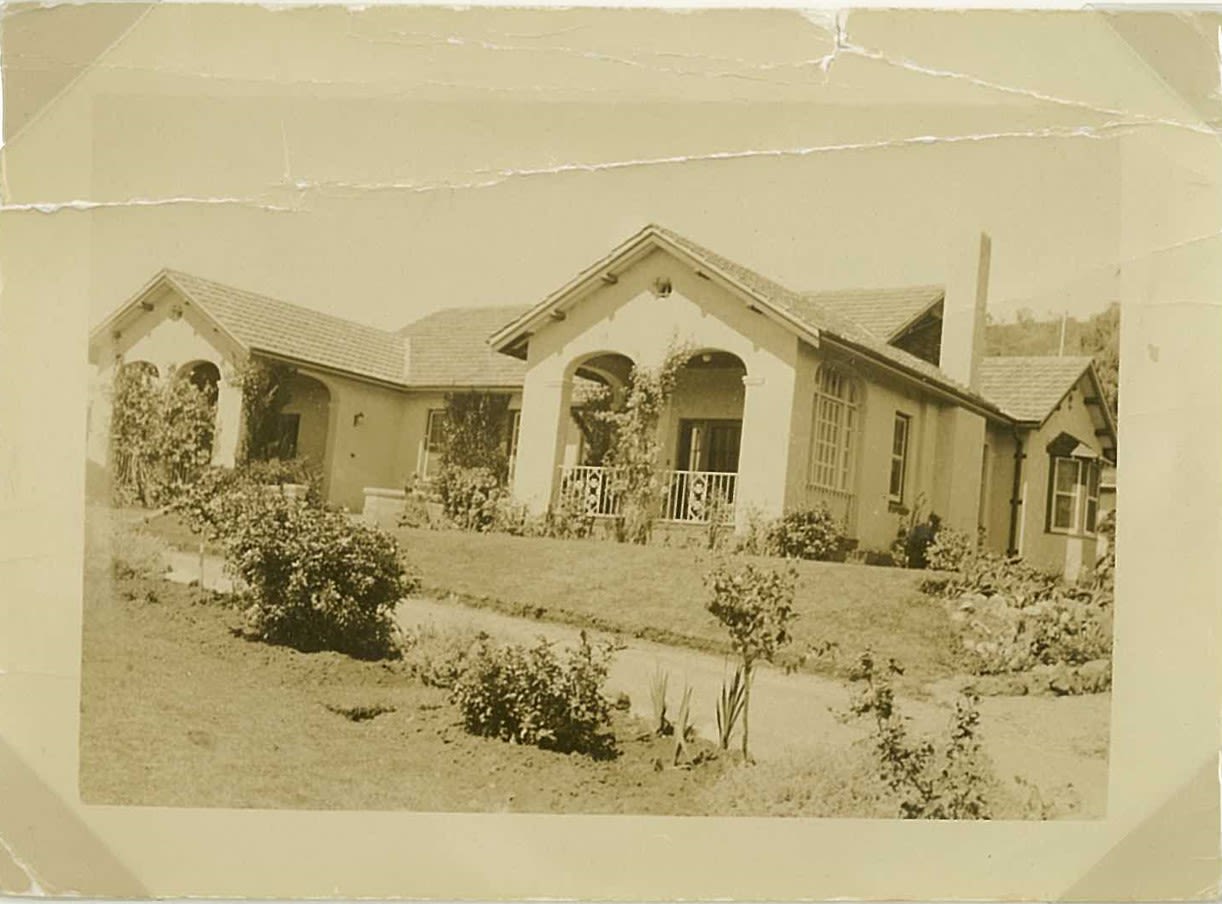
24 Mugga Way, Dawn's childhood home
24 Mugga Way, Dawn's childhood home
Her desire to preserve a piece of early Canberra culminated with her childhood home, 24 Mugga Way, being sold to the government in 1984 before it opened as a house museum as Calthorpes House. Over the years Dawn has assisted with numerous displays and programs, educating generations of children about the early days of the capital.
In 2021 Dawn was awarded an OAM for her services to community history. Now she is surrounded by family and friends as they help her celebrate her centenary year.
Interviewed in 2014 for the Canberra centenary Dawn said:
"I don’t believe there are margins in life. When does your childhood stop, when does your youth stop..do you think you have just become an adult at a certain time? I don’t think so.
"I think it is all there, that is how I feel and I can go back and feel seven if I want to, and 27...It is a continuum."

A young Dawn having a tea party at 24 Mugga Way
A young Dawn having a tea party at 24 Mugga Way
Everyone at ACT Historic Places would like to wish Dawn a very happy 100th birthday.

Dawn Waterhouse, pictured in 2023, at her Deakin home
Dawn Waterhouse, pictured in 2023, at her Deakin home
Acknowledgements
Writer and digital producer: Cathy Pryor, Curator of Exhibitions and Research, ACT Historic Places
Watercolour illustrations: Anne Langridge, original watercolours for Chortles, Chores and Chilblains- Cameos of Childhood in Calthorpes House by Dawn Waterhouse, ACT Historic Places, 2002
Dawn Waterhouse interviews: Cathy Pryor for ACT Historic Places 2023, Matthew Higgins for National Library of Australia's Centenary of Canberra Oral History Project 2014
Photographs courtesy of Dawn Waterhouse and ACT Historic Places Collection, Anna Wong

